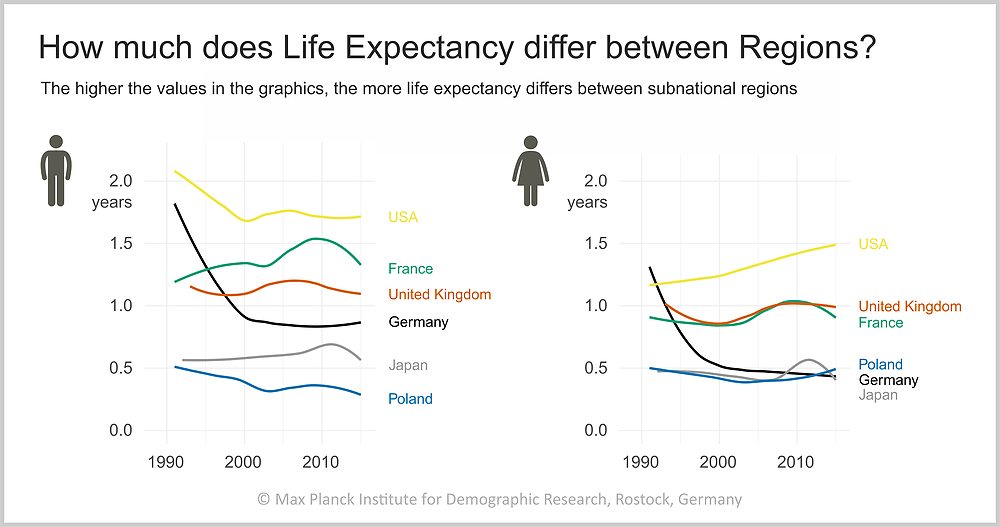January 17, 2020 | News | Life Expectancy in Germany
Low Regional Inequalities in Life Expectancy by International Standards

Even though there are economic inequalities between regions in Germany, there are few inequalities in life expectancy. © ewg3D/iStockphoto.com
Compared to other OECD countries, Germany experiences low regional variation in life expectancy despite having comparatively large regional economic inequalities.
Economic inequalities between regions are on the rise in most wealthy countries. Germany is no exception. Researchers have long assumed that this would translate into growing regional inequalities in life expectancy. But in Germany, this is not the case. Although there are comparatively large differences in per capita GDP between German federal states, regional differences in life expectancy are marginal. A team of researchers led by Alyson van Raalte published their findings in the International Journal of Epidemiology.
"The good news is that the differences in life expectancy between the German federal states are small by international standards," says Alyson van Raalte, head of the Research Group Lifespan Inequalities at the Max Planck Institute for Demographic Research in Rostock.
Inequalities have declined markedly since reunification
Only 30 years ago, at the dawn of reunification, Germans experienced among the highest regional inequalities in life expectancy within the OECD. German women led the world in life expectancy inequalities, with German men a close second to those in the United States. Women have since experienced the sharpest decline in regional life expectancy inequalities, and in a reversal of fortune, are now the leaders in survival equality across regions. “We were surprised to discover just how quickly these regional differences declined following reunification. That’s a remarkable achievement", says Alyson van Raalte. Even among men, the differences today are moderate in international comparison.

The more life expectancy differs between the regions of a country in a given year, the greater the value in the graphics. The values are given as so-called standard deviations. For each year, the standard deviation indicates how far the life expectancies of the individual regions deviate on average from the national average. It is thus a measure of inequality of life expectancies between the regions. For women in Germany it is just under half a year. © MPIDR
This isn’t only a story of life expectancy convergence across Germany. For even within the former West Germany, regional differences in life expectancy have become much smaller since reunification. They’re almost half of their pre-reunification peak. "It may be that the historically unique event of the fall of the Berlin Wall placed a special focus on creating comparable living conditions in a now reunited Germany," says Alyson van Raalte. As a result, the economically weaker federal states in former West Germany probably also benefited from reunification.
Original publication
van Raalte, A., Klüsener, S., Oksuzyan, A., Grigoriev, P.: Declining regional disparities in mortality in the context of persisting large inequalities in economic conditions: the case of Germany. International Journal of Epidemiology (2020). DOI: https://doi.org/10.1093/ije/dyz265